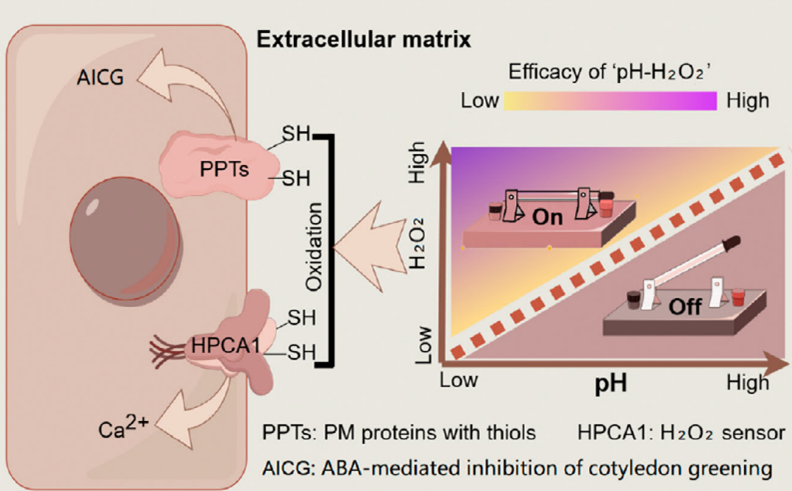
Apoplastic pH acts as a chemical switch in plants by modulating H2O2 redox potential
Plant Science Research WeeklyEnvironmental stimuli, such as drought and salinity, alter cellular conditions including apoplastic pH (pHApo) in plants. These stimuli often lead to an elevation in pHApo which is closely associated with cell functions and plant growth. However, the mechanism behind is largely unexplored. A recent study…

Interconnected memories: How heat stress and bacterial infection shape plant resilience
Blog, Plant Science Research WeeklyMemory—a mysterious cognitive process that retains information over time and shapes future interpretations and actions—is not exclusive to animals. In plants, a similar phenomenon occurs where past exposure to environmental stressors is “memorized,” enabling plants to respond more effectively…
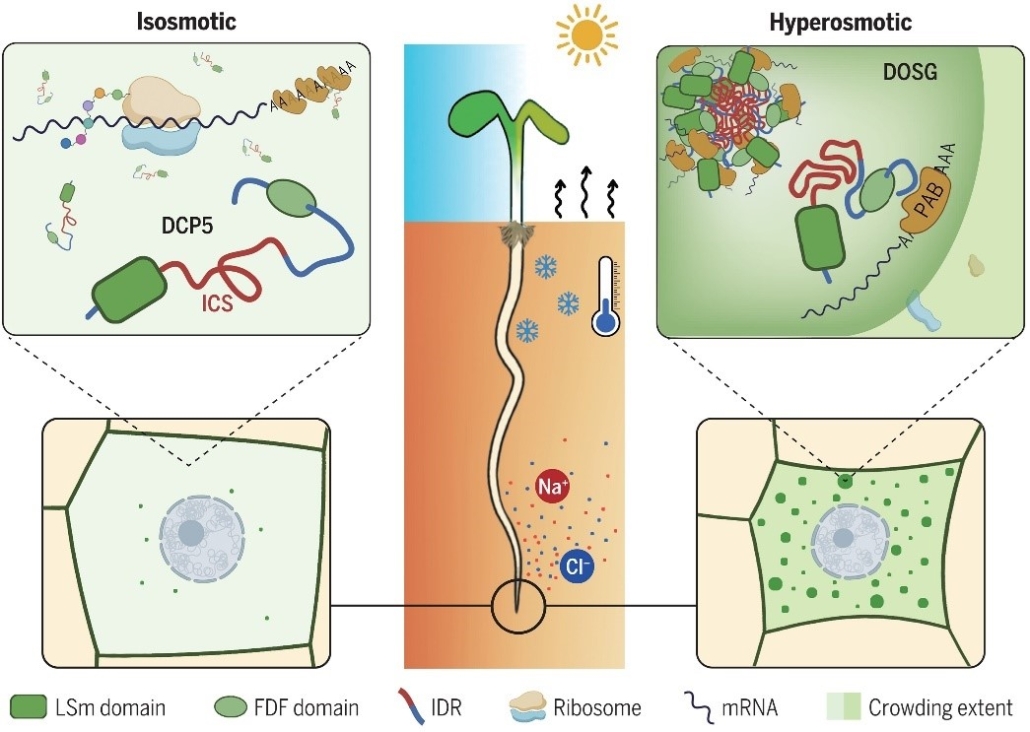
Crowd control by DCP5 - a new cytoplasmic osmosensor
Plant Science Research WeeklyOsmosis, driving water uptake and transport, is crucial for plants. It supports nutrient uptake, turgidity, and overall plant health. In hyperosmotic conditions, caused by drought, salinity, and cold stress, water loss triggers osmotic responses. A key question is: what sensors detect osmotic changes?…

The Role of ECT8 in Decoding Salt Stress Resistance in Plants
The Plant Cell: In a NutshellZhihe Cai (Synthetic and Functional Biomolecules Center, Beijing National Laboratory for Molecular Sciences, Key Laboratory of Bioorganic Chemistry and Molecular Engineering of Ministry of Education, College of Chemistry and Molecular Engineering, Peking University, Beijing 100871, China)
https://doi.org/10.1093/plcell/koae149
Background:…
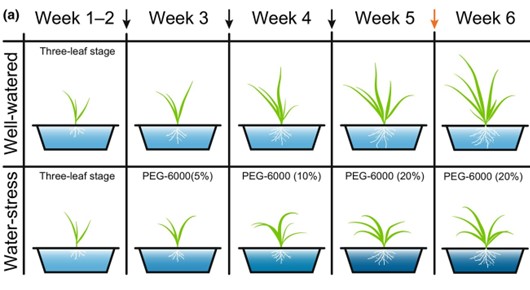
Using emmer wheat to discover genes involved in drought tolerance
Plant Science Research WeeklyWheat is a major global crop, but its yields are severely compromised by drought, thus developing varieties with a higher drought tolerance is important. Emmer wheat (Triticum turgidum) is a wheat ancestor that contains more genetic diversity than cultivated varieties, so it can be used in genome wide…
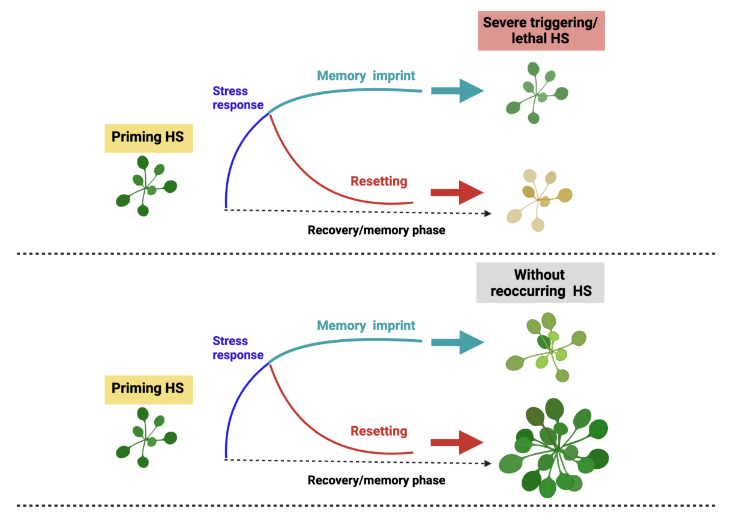
Review. Autophagy: A key player in the recovery of plants from heat stress
Plant Science Research WeeklyPlants have a remarkable ability to adapt to stress. For many stresses, plants respond to short-term mild exposure by becoming more tolerant to subsequent harsher stresses that would otherwise be lethal; this effect is known as priming. Priming occurs through several mechanisms that can include changes…

Oryza glumaepatula: A wild relative to improve drought tolerance in cultivated rice
Plant Science Research WeeklyWhen we speak about rice, we’re often referring to one of two domesticated species, Oryza japonica or Oryza indica. However, there are an additional 25 species in the genus Oryza. These so-called wild relatives harbor substantial genetic diversity that holds promise for crop improvement. Here, Prakash…
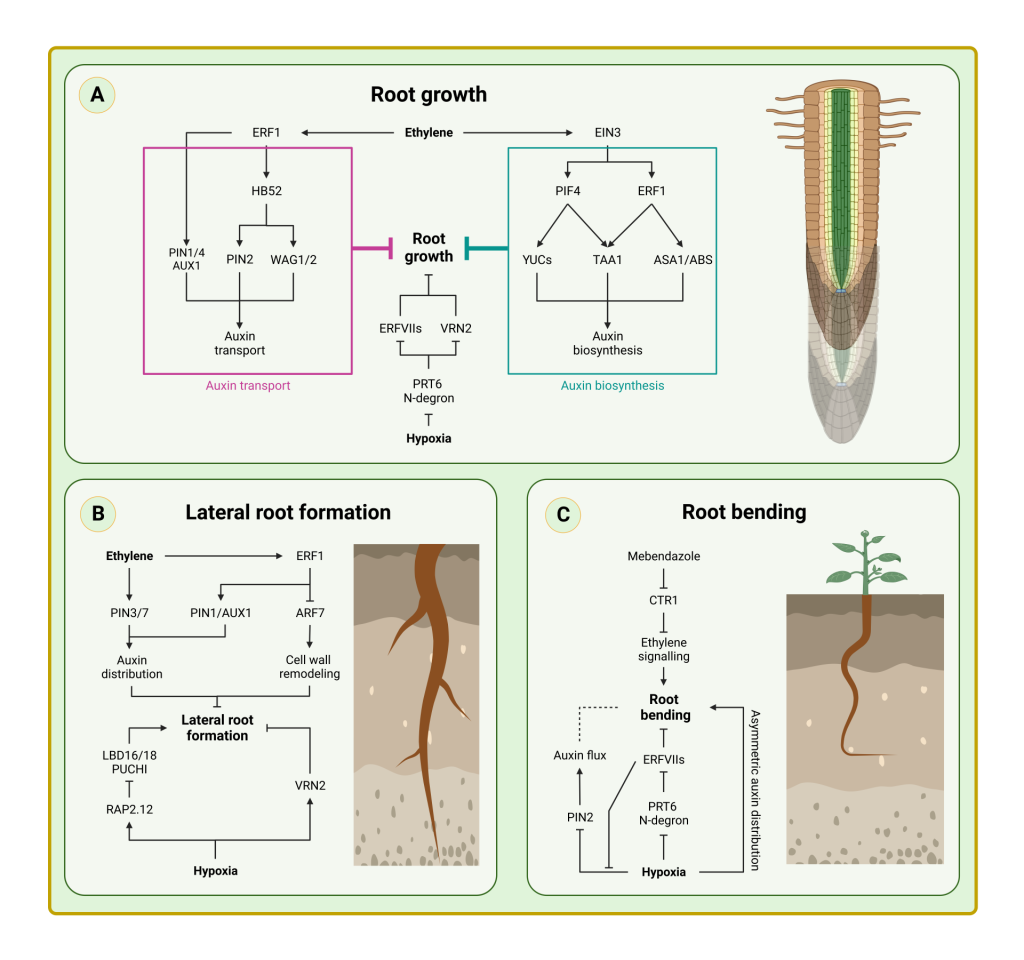
Review: How plant roots respond to waterlogging
Plant Science Research WeeklyAs the hottest year on record, 2023 has truly been a global annus horribilis during which humans, other animals, and domesticated and wild plants have faced unprecedented environmental challenges. In the past month alone, torrential rainfalls have wreaked havoc in Asia, the Middle East, and many parts…
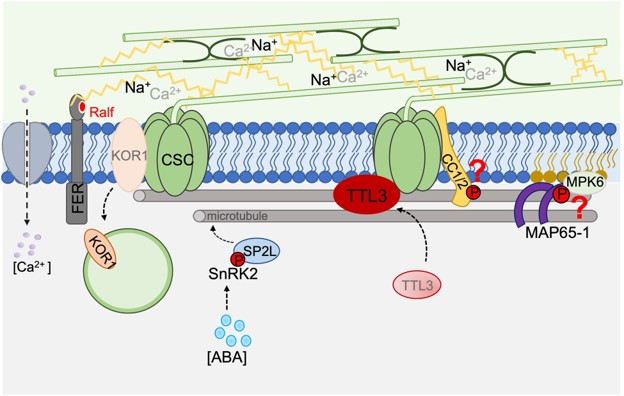
Review: The cell biology of primary cell walls during salt stress (Plant Cell)
Plant Science Research WeeklySalt is a massive problem for most land plants. At the macroscopic level, excess soil salinity can cause stunting or death. At the molecular / cellular level, salinity causes both osmotic and ionic challenges that affect membrane homeostasis, molecular interactions, and protein stability. A new review…

